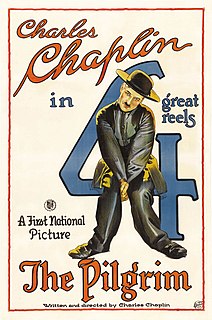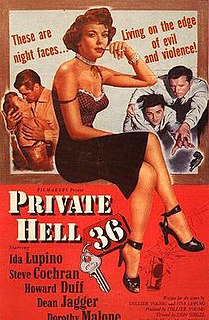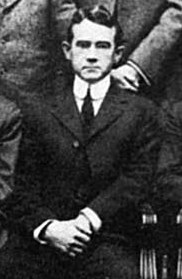Related Research Articles

Alfred Damon Runyon was an American newspaperman and short-story writer.

Robert Hooke FRS was an English polymath active as a scientist and architect, who, using a microscope, was the first to visualize a micro-organism. An impoverished scientific inquirer in young adulthood, he found wealth and esteem by performing over half of the architectural surveys after London's great fire of 1666. Hooke was also a member of the Royal Society and since 1662 was its curator of experiments. Hooke was also Professor of Geometry at Gresham College.

The Harvard Mark I, or IBM Automatic Sequence Controlled Calculator (ASCC), was a general-purpose electromechanical computer used in the war effort during the last part of World War II.
Genre fiction, also known as popular fiction, is a term used in the book-trade for fictional works written with the intent of fitting into a specific literary genre, in order to appeal to readers and fans already familiar with that genre.

Sexton Blake is a fictional character, a detective who has been featured in many British comic strips, novels and dramatic productions since 1893. Sexton Blake adventures were featured in a wide variety of British and international publications from 1893 to 1978, comprising more than 4,000 stories by some 200 different authors. Blake was also the hero of numerous silent and sound films, radio serials, and a 1960s ITV television series.

William Jacob Cuppy was an American humorist and literary critic, known for his satirical books about nature and historical figures.

Bridget Bishop was the first person executed for witchcraft during the Salem witch trials in 1692. Nineteen were hanged, and one, Giles Corey, was pressed to death. Altogether, about 200 people were tried.

Murder is Easy is a work of detective fiction by Agatha Christie and first published in the UK by the Collins Crime Club on 5 June 1939 and in the US by Dodd, Mead and Company in September of the same year under the title of Easy to Kill. Christie's recurring character, Superintendent Battle, has a cameo appearance at the end, but plays no part in either the solution of the mystery or the apprehension of the criminal. The UK edition retailed at seven shillings and sixpence (7/6) and the US edition at $2.00.

Frances Parkinson Keyes was an American author who wrote about her life as the wife of a U.S. Senator and novels set in New England, Louisiana, and Europe. A convert to Roman Catholicism, her later works frequently featured Catholic themes and beliefs. Her last name rhymes with "eyes," not "keys."

Maxwell Greevey is a fictional character played by George Dzundza on NBC's long-running police procedural and legal drama television series Law & Order. Following Dzundza's departure from the cast at the end of the first season, Greevey was written off the series with his death in the second season premiere.

The Pilgrim is a 1923 American silent film made by Charlie Chaplin for the First National Film Company, starring Chaplin and Edna Purviance.

Private Hell 36 is a 1954 American crime film noir directed by Don Siegel starring Ida Lupino, Steve Cochran, Howard Duff, Dean Jagger and Dorothy Malone.

Jimmie Dale is a fictional character created by Frank L. Packard in 1914. Stories featuring the character were published in magazines including People's Magazine, collected in books, and adapted to film.
The Cutler School of New York was a primary through college preparatory boys' school initially located at 713 6th Ave., between 23rd and 24th Street, only a few blocks from the Roosevelt home in Manhattan, New York City, New York. Classes were originally held on the second floor above Burns Oyster and Chop House.

Waxey Gordon was an American gangster who specialized in bootlegging and illegal gambling. An associate of Arnold Rothstein during prohibition, he was caught up in a power struggle following Rothstein's death. Fellow Rothstein associates Charles "Lucky" Luciano and Meyer Lansky provided authorities with evidence that led to his imprisonment for ten years.

"The Man of the Crowd" is a short story by American writer Edgar Allan Poe about a nameless narrator following a man through a crowded London. It was first published in 1840.

Fashions of 1934 is a 1934 American pre-Code musical comedy film directed by William Dieterle with musical numbers created and directed by Busby Berkeley. The screenplay by F. Hugh Herbert and Carl Erickson was based on the story The Fashion Plate by Harry Collins and Warren Duff. The film stars William Powell, Bette Davis, Hugh Herbert and Frank McHugh, and has songs by Sammy Fain (music) and Irving Kahal (lyrics). Sometime after the initial release, the title Fashions of 1934 was changed to Fashions, replacing the original title with an insert card stating "William Powell in 'Fashions'".

Harry Miller Lydenberg was an American librarian, author and book conservationist. He is best known for his decades-long career as a librarian and eventual director for the New York Public Library, American liaison to the international library community, as well as one of the 100 most important library innovators of the 20th century. His written works describe his preferred library reference, collection and conservation practices, as well as his knowledge of the New York Public Library.
Douglas Bronston was an American screenwriter and writer.
Plain Clothes is a 1925 silent black and white short American film starring Harry Langdon directed by Harry Edwards and produced by Mack Sennett. It was Sennett's first film at least partly written by Frank Capra.
References
- ↑ "Summary Bibliography: Howard Fielding". www.isfdb.org.
- ↑ "Harvard University Directory". Harvard University. March 10, 1914 – via Google Books.
- ↑ "Automatic Bridget, and other humorous sketches,, by Charles Witherle Hooke | The Online Books Page". onlinebooks.library.upenn.edu.
- ↑ "Joseph Rainone Early Comic Collection". collections.dartmouth.edu.
- ↑ "The victim of his clothes". Library of Congress.
- ↑ Hooke, Charles Witherle (March 10, 1927). "Straight Crooks: A Detective Story". Chelsea House – via Google Books.
- ↑ "The Inspirations of Harry Larrabee".